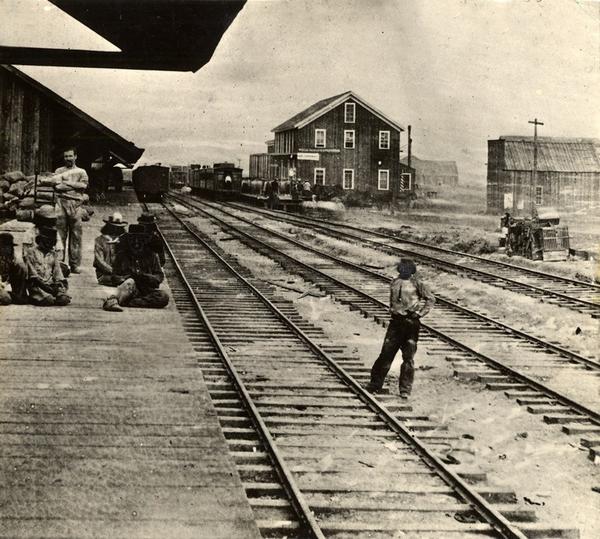
May 9th was a big day for Reno. It marked the 150th anniversary of the city’s founding back in 1868. Historian Alicia Barber gives us the scoop on how it all began in this episode of Time & Place.
It’s entirely possible to stand in the heart of downtown Reno today and not even realize that a railroad runs straight through it. The tracks were lowered below ground in 2006. Until then, waiting at a crossing for a train to pass by was a Reno ritual dating back to the very beginning.
There were no railroads in the entire state of Nevada until late 1867, when workers for the Central Pacific Railroad, most of them Chinese immigrants, finally finished the treacherous job of laying the tracks over the Sierra on their way east from Sacramento. At the same time, the Union Pacific Railroad was building the line westward from Omaha, Nebraska in a mad rush to meet somewhere in the middle and complete the country’s first transcontinental railroad.
After their triumph over the mountains, the next challenge for the Central Pacific was deciding where to locate their first station on the Nevada side. At the time, the state’s biggest draw was the Comstock Lode, centered at Virginia City, about 25 miles south of the railroad’s planned east-west route. So the ideal site for the new station would offer a straight shot to the Comstock and close proximity to a bridge over the Truckee River, which you had to cross to get there.
One candidate was the little community of Glendale, the current site of Sparks. Unfortunately, on the day the railroad survey team came by to scope it out, Glendale was partially flooded. Crystal Peak, a little settlement near the California border, was also rejected.
In between them was Lake’s Crossing, named for Myron C. Lake, who ran a toll bridge over the river and a small hotel on its south bank. As an added bonus, Lake and his predecessor, Charles Fuller, had roughed out an early road heading straight from their crossing toward Virginia City.
Lake won the day. He sold the railroad around 107 acres of his land just north of the river, and on May ninth, 1868, the company auctioned off the first lots of the new townsite. They named it Reno, in honor of General Jesse Lee Reno, a Union officer killed at the Battle of South Mountain six years earlier. The road to Virginia City became Virginia Street, still Reno’s major north-south corridor.
You can stand on Virginia Street today and peer down at the tracks. You might even catch sight of one of the trains that still pass through town, bridging the past and present like a distant memory brought to life.
Writer and historian Alicia Barber is the curator of “Reno at the Crossroads: A Sesquicentennial Exhibit,” now on display at the Mathewson-IGT Knowledge Center at the University of Nevada, Reno.
Learn more about Reno’s founding.






